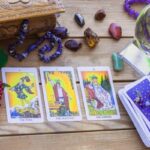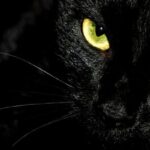We explain what witchcraft is, the first stories that mention it, the witch hunt and its representation in current folklore.

What is witchcraft?
It is called witchcraft set of beliefs and ritual practices attributed to witches (and less frequently, witches), that is, individuals supposedly endowed with supernatural powers resulting from arcane or occult knowledge, or from pacts with demonic entities.
Witchcraft is a broad and heterogeneous category, condemned by traditional religions and linked to paganism. It has existed since Antiquity, although not necessarily under that same name, nor understood in the same way as today.
It is difficult to know when the word “witch” and its derivative “witchcraft” began to be used, since its origin is unknown and there are reasons to think that it is a word with pre-Roman etymology, perhaps Celtic or Germanic. In any case, the first documented record of the word, written as “witch”, dates back to 13th century Europe.
Even so, The figure of fortune tellers, sorceresses or enchanters dates back to ancient times and appears in numerous literary texts. For example, in the Odyssey The sorceress Circe appears, a resident of the island of Aea, who through potions turned her enemies into animals or made them forget their home; and in other works the sorceress Medea, Jason's wife, who had knowledge of magic.
There are similar stories in the biblical Old Testament, in which King Saul consults the “witch of Endor.” Also records of the practice of the “evil eye” by witches in Ancient Egypt and other Mediterranean and African civilizations, in which talismans were common to prevent it.
In these stories, characteristic traits were already attributed to witches, such as knowledge of potions and herbs, the gift of metamorphosis into animals, necromancy, the ability to fly (on brooms or turned into vultures), the ingestion of food. strangers, usually parts of lizards, bats or insects, or even cannibalism (especially consumption of young children) or ritual sacrifice.
During the end of the Middle Ages and beginning of the Renaissance Witchcraft occupied a prominent place in the Western imagination, since the religious institutions of Christianity were actively dedicated to the search and persecution of witches, especially through the Holy Office of the Inquisition.
Accused of heresy, demonic pacts and practice of the dark arts (divination, necromancy, etc.), Many women throughout Europe and America were subjected to torture and executions public, like burning them alive at the stake.
Important records remain of such witch hunts, whose beginning dates back to the 13th century and its most frenetic moments in the 16th and 17th centuries. For example:
- Directorium inquisitorium from 1376, it is the inquisitors manual of Nicolás Aymerich (1320-1399). In it three forms of witchcraft are distinguished, based on their supposed demonic practices.
- Malleus maleficarum from 1487, is an exhaustive Renaissance treatise on witchcraft.
- Démonomania des sorciersfrom 1580, by the Frenchman Jean Bodin.
The Protestant Reformation, far from putting an end to such practices, fervently assumed them. It is estimated that in southern Germany alone about 3,230 “witches” were burned to death between 1560 and 1670, and in Scotland only about 4,400 between 1590 and 1680.
Newly With the Scientific Revolution and the advent of the Enlightenment, the Christian obsession with witchcraft lost intensity and rather passed into the realm of folklore and popular traditions, even children.
This is how witchcraft reaches today. Today witches are part of the imagination of fairy tales and folklore peasant. However, there are still religious groups that still accuse practitioners of other cults of witchcraft, especially non-Western religions (such as Yoruba or other African ones), or those who practice neo-paganism, through cults such as Wicca or the neodruidism.
Continue with: Heresy
References
- “Witchcraft” on Wikipedia.
- “Where do witches come from?” on BBC News World.
- “Witches in history” in Los ojos de Hipatia (Spain).
- “Witchcraft in history and art” in Ventura.





